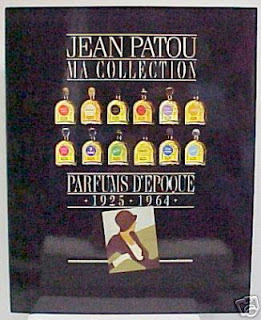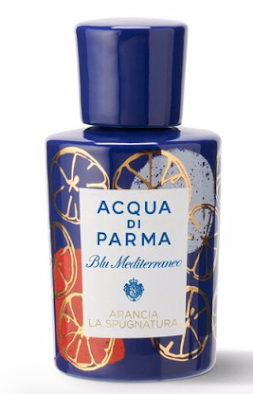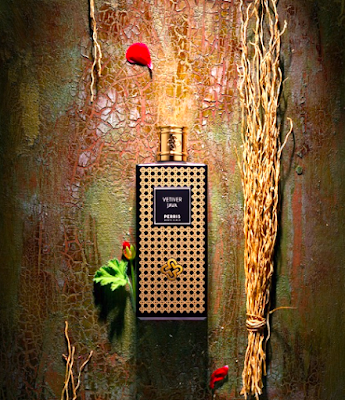Thomas Fontaine and the House of Patou (1/2)
I'm sure that, within short, we'll read a lot about Thomas Fontaine. And to explain why, I need to go back a little and tell you -shortly- the story of the House of Patou.
The great couturier Jean Patou opened his first fashion house in 1912, and soon his sporty, informal clothing gained success, mainly in France and the USA. In 1925, like other couturiers were doing in those years, Patou launched his line of fragrances: Amour Amour, Que Sais-je? and Adieu Sagesse, composed by the great Henri Almèras The collaboration between Almèras and Patou continued for a long time: in 1928 they invented the suntan lotion Huile de Chaldee (for "outdoor holidays" that were coming in trend in that period) which was so successful that it had to be transformed into a perfume itself. In 1930 Almeras composed Joy, advertised as "the costliest perfume in the world", launched specifically to defeat the Depression in which the Western world had fallen after Wall Street collapsed in 1929.
In the same year Patou opened the first "Scent Bar" in the perfumery history: customers could choose between three ready bases and add essential oils of their choice, to get an "almost tailor-made" perfume signed Patou.
Patou perfumes of the following years marked important moments in the history of France: Normandie (1935) celebrated the christening of the Normandie liner (every boarding guest was given a sample of this perfume), Vacances (1936) celebrated the paid holidays that French had just obtained, Colony (1938) was an home to the exhibition in Paris which had "Colonies" as main theme, L'Heure Attendue (1946) celebrated the liberation of Paris at the end of World War II. All these fragrances were riedited by Jean Kerlèo in the 80s, and relaunched under the name "Ma Collection".
Patou perfumes of the following years marked important moments in the history of France: Normandie (1935) celebrated the christening of the Normandie liner (every boarding guest was given a sample of this perfume), Vacances (1936) celebrated the paid holidays that French had just obtained, Colony (1938) was an home to the exhibition in Paris which had "Colonies" as main theme, L'Heure Attendue (1946) celebrated the liberation of Paris at the end of World War II. All these fragrances were riedited by Jean Kerlèo in the 80s, and relaunched under the name "Ma Collection".
Meanwhile, in 1936 Jean Patou died prematurely, and the company passed to his sister and brother in law, who continued his work.
In 1940 Henri Giboulet (Eau de Joy, 1955 and Caline, 1964) was appointed "Parfumeur Maison" succeeding to Henri Almeras, and in 1967 he passed the baton to Jean Kerléo (1000 in 1972, Ma Liberté in 1987 and Sublime in 1992).
Thirty years later, in 1998, Jean Kerléo retired and was replaced by his young pupil Jean Michel Duriez (Un Amour de Patou, 1998; EnJoy, 2003; Sira des Indes, 2006).
In 2001, Patou's great-grandson Jean de Mouy, sold the brand to the multinational Company Procter & Gamble, which maintained the collaboration with Michel Duriez and even entrusted him with the composition of Rochas perfumes, acquired in meantime.
At the end of 2011, Patou was sold to Designer Parfums, a British group with a rich portfolio: Worth, Aigner Parfums, Jean Louis Scherrer and Agent Provocateur. Designer Parfums showed plans to restore the masterpieces of its heritage brands (mainly Worth and Patou).
In 1940 Henri Giboulet (Eau de Joy, 1955 and Caline, 1964) was appointed "Parfumeur Maison" succeeding to Henri Almeras, and in 1967 he passed the baton to Jean Kerléo (1000 in 1972, Ma Liberté in 1987 and Sublime in 1992).
Thirty years later, in 1998, Jean Kerléo retired and was replaced by his young pupil Jean Michel Duriez (Un Amour de Patou, 1998; EnJoy, 2003; Sira des Indes, 2006).
In 2001, Patou's great-grandson Jean de Mouy, sold the brand to the multinational Company Procter & Gamble, which maintained the collaboration with Michel Duriez and even entrusted him with the composition of Rochas perfumes, acquired in meantime.
At the end of 2011, Patou was sold to Designer Parfums, a British group with a rich portfolio: Worth, Aigner Parfums, Jean Louis Scherrer and Agent Provocateur. Designer Parfums showed plans to restore the masterpieces of its heritage brands (mainly Worth and Patou).
Michel Duriez, however, hasn't followed Patou and is currently still working in Procter & Gamble, thus it was necessary to find an expert able to wisely handle an artistic heritage of inestimable value: Thomas Fontaine.
Thomas, with his company "Pallida" possess the finesse required to respect the legacy he receives from Patou, and bring it into the 21st century without distorting it. He has a long experience gained over several decades in companies specializing in nature such as Mane, Charabot and at the German Technico-Flor, working for brands such as Lubin (Gin Fizz), Grès, L'Occitane, D&G, Leonard, JC Brosseau (Bois D'Orient and Shadows Platine).
I met him twice, and I'm happy to share some conversations we had on his challenge at Patou's. (follows here)
Pic: thanx to Perfumeshrine!
Thomas, with his company "Pallida" possess the finesse required to respect the legacy he receives from Patou, and bring it into the 21st century without distorting it. He has a long experience gained over several decades in companies specializing in nature such as Mane, Charabot and at the German Technico-Flor, working for brands such as Lubin (Gin Fizz), Grès, L'Occitane, D&G, Leonard, JC Brosseau (Bois D'Orient and Shadows Platine).
I met him twice, and I'm happy to share some conversations we had on his challenge at Patou's. (follows here)
Pic: thanx to Perfumeshrine!




Commenti